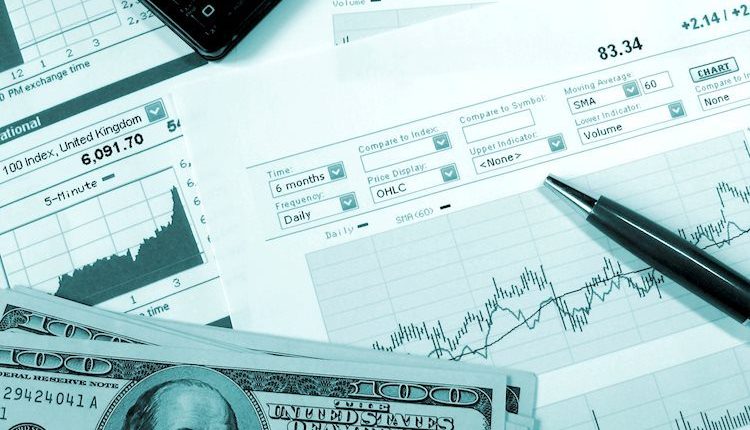- The US Dollar marginally adds to gains after ECB President Christine Lagarde confirmed talks of possibly a 50 bps rate cut.
- Traders favor the Greenback again over the Euro after the ECB rate decision provides little outlook for 2025 in terms of projections.
- The US Dollar Index (DXY) trades pops above 106.50 and heads higher
The US Dollar (USD) is holding on to gains this Thursday after the European Central Bank (ECB) has cut its policy rate by 25 basis points in its last meeting for 2024. ECB President Christine Lagarde confirmed during her press conference that a bigger rate cut was under concideration after several Eurezone countries saw their economic activity fall into contraction. Although a 25 basis points interest-rate cut was in line with expectations, questinos will remain if that is enough to kickstart the Eurozone economy again.
In the US, the economic calendar is rather light. The weekly Jobless Claims came in higher than expected at 242,000 against the expected 220,000. The Producer Price Index (PPI) report saw same more concerns with the monthly Headline Index ticking up to 0.4%, beating the 0.2% expectation and above the previous release of 0.3%. Inflation does not look to be abaiting that easily even now.
Daily digest market movers: Split between US and EU turns bigger
- The European Central Bank (ECB) has cut its policy rate by 25 basis points to 3%. Questions are if that is enough to turn around the contraction that is taking place in nearly all local economies in the Eurozone.
- ECB President Christine Lagarde confirmed during the press conference that a 50 basis points rate cut was under consideration. This opens the door to more uncertainty and possibly more downside risks for the Eurozone and further deteriorating economic activity.
- Initial Jobless Claims for the week of December 6 jumped higher to 242,000, beating the consensus view of 220,000 from 224,000 a week earlier.
- As for the Producer Price Index (PPI) data for November, the monthly headline PPI should increase jumped to 0.4%, above the 0.2% expectation, while the yearly figure came in at 3% from 2.4%. The monthly core PPI increased by 0.2%, slowing from the 0.3% increase seen the previous month. The yearly figure came in higher at 3.4% from 3.1%.
- Equities are looking for direction with minor gains and losses at hand across Europe and the US.
- The CME FedWatch Tool is pricing in another 25 basis points (bps) rate cut by the Fed at the December 18 meeting by 98.6%, the highest probability seen yet after the US CPI release.
- The US 10-year benchmark rate trades at 4.28%, a fresh high for this week.
US Dollar Index Technical Analysis: Euro outflow – USD inflow
The US Dollar Index (DXY) is further defining a bandwidth that could hold until next year given the limited amount of data points left. The US Consumer Price Index (CPI) release did not really move the needle, with the DXY staying between 105.50 and 107.00.
The US Dollar bulls failed on Wednesday to close above 106.52 (April 16 high), a level that on previous occasions has also been a hard barrier to get through.. Next up is the 107.00 round level and 107.35 (October 3, 2023, high). Further up, the high of November 22 at 108.7 emerges.
Looking down, the pivotal level at 105.53 (April 11 high) comes into play before heading into the 104-region. Should the DXY fall all the way towards 104.00, the 200-day Simple Moving Average at 104.14 should catch any falling knife formation.
US Dollar Index: Daily Chart
Fed FAQs
Monetary policy in the US is shaped by the Federal Reserve (Fed). The Fed has two mandates: to achieve price stability and foster full employment. Its primary tool to achieve these goals is by adjusting interest rates. When prices are rising too quickly and inflation is above the Fed’s 2% target, it raises interest rates, increasing borrowing costs throughout the economy. This results in a stronger US Dollar (USD) as it makes the US a more attractive place for international investors to park their money. When inflation falls below 2% or the Unemployment Rate is too high, the Fed may lower interest rates to encourage borrowing, which weighs on the Greenback.
The Federal Reserve (Fed) holds eight policy meetings a year, where the Federal Open Market Committee (FOMC) assesses economic conditions and makes monetary policy decisions. The FOMC is attended by twelve Fed officials – the seven members of the Board of Governors, the president of the Federal Reserve Bank of New York, and four of the remaining eleven regional Reserve Bank presidents, who serve one-year terms on a rotating basis.
In extreme situations, the Federal Reserve may resort to a policy named Quantitative Easing (QE). QE is the process by which the Fed substantially increases the flow of credit in a stuck financial system. It is a non-standard policy measure used during crises or when inflation is extremely low. It was the Fed’s weapon of choice during the Great Financial Crisis in 2008. It involves the Fed printing more Dollars and using them to buy high grade bonds from financial institutions. QE usually weakens the US Dollar.
Quantitative tightening (QT) is the reverse process of QE, whereby the Federal Reserve stops buying bonds from financial institutions and does not reinvest the principal from the bonds it holds maturing, to purchase new bonds. It is usually positive for the value of the US Dollar.
Read the full article here

